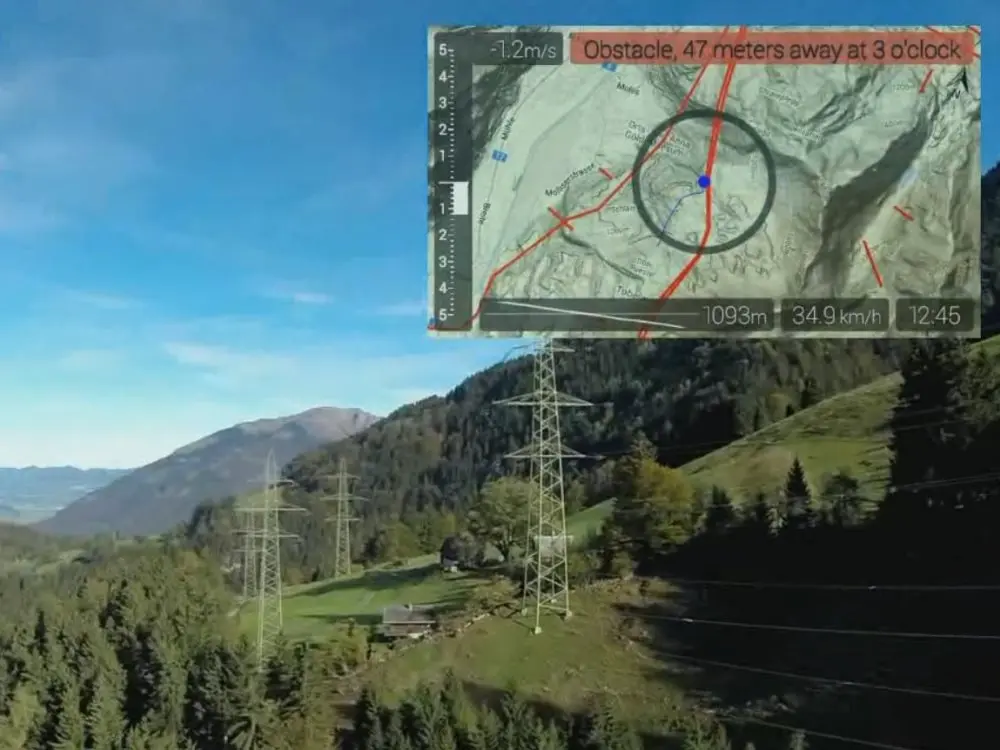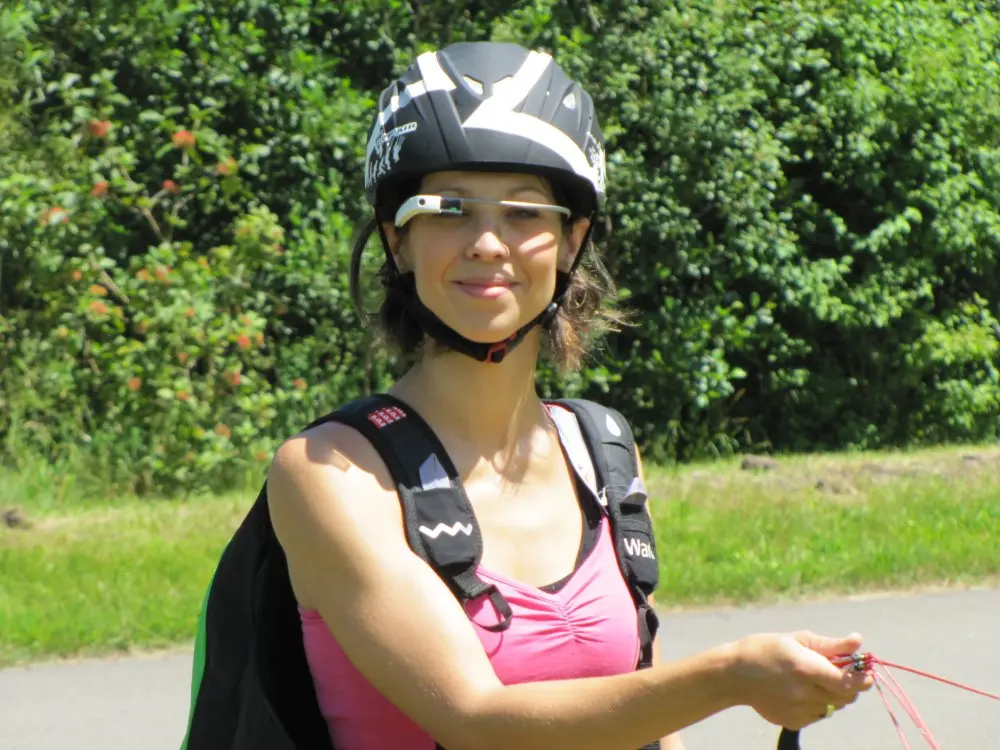Google Glass app project
A clear perspective for paraglider pilots
Researchers at the Institute of Applied Information Technology have developed a Google Glass app for paraglider pilots. Thanks to a head-up display, pilots have a range of relevant information in their line of vision while still being able to observe their environment. Besides making the paragliding experience more enjoyable, this app also makes it safer.
Paraglider pilots have far more than the captivating view to occupy their attention. Many pilots now use electronic devices to help them navigate at altitude in safety. One such is Professor Karl Rege, who is not only a paragliding enthusiast but also teaches at the Institute of Applied Information Technology (InIT). As he explains, “Once you start flying cross country, electronic instruments are essential. Without them, it is simply impossible to take account of all the airspaces, restrictions, danger zones and obstacles to flight.”
To date, only a few costly flight instrument systems have been able to cover all these parameters. Displaying the data intelligibly has proved a further problem, in addition to which many instrument panels are difficult to read in direct sunlight. Working with Information Technology students on a number of project assignments and bachelor degree theses, Karl Rege has now developed a Google Glass based prototype software application which provides paraglider pilots with a wide range of relevant metrics on a head-up display.
“Once you start flying cross country, electronic instruments are essential. Without them, it is simply impossible to take account of all the airspaces, restrictions, danger zones and obstacles to flight.”
Professor Karl Rege, Project Manager, Institute of Applied Information Technology (InIT)
Google Glass technology
Google Glass uses a prism to project a small screen straight into the user’s line of vision. The prism is placed above the user’s right eye, thus impairing normal vision only marginally. To the user, the high-definition display appears to be two metres away. This makes it possible for the user to observe the screen without having to alter his or her gaze significantly, thus reducing eye fatigue to a minimum. “By inserting a small additional shield, the display can also easily be read in bright sunlight,” explains Karl Rege. “Operation of the system is intuitively easy to grasp, starting with the spoken command “OK Glass” and continuing with finger gestures on the spectacle frame.”

Incorporating sensors and data into the app
The newly developed app provides the pilot with information from several different sources. A Bluetooth low energy network transmits data from the sensors in the Flytec SensBox, a device specially designed for measuring flight data and transmitting it to mobile aviation applications. The Google Glass paraglider app also draws on data from the off-line Google Maps library, the Swiss Federal Office of Civil Aviation inventory of air navigation obstacles and air-traffic information from Skyguide, Switzerland’s air traffic control authority.
“The display shows the rate of ascent or descent in both digital and analogue form and how these are evolving over time, height above sea level, ground speed and the current time.”
Professor Karl Rege, Project Manager, Institute of Applied Information Technology (InIT)
Google Glass display
The display has deliberately been kept simple and is limited to the information the pilot needs. “The display shows the rate of ascent or descent in both digital and analogue form and how these are evolving over time, height above sea level, ground speed and the current time.” explains Karl Rege. The background is a simple two-dimensional land map enabling the pilot to keep his or her bearings. This map also includes take-off and landing areas, designated airspaces and air-navigation obstacles. As the paraglider approaches one of these, visual and acoustic signals are automatically generated, ranging from “information”, to “warning” to “dangerous” depending on their proximity.
Initial test results and next steps
The initial test flights have already been successfully carried out. In addition to demonstrating the fundamental viability of the concept, these test flights also identified several areas for potential improvement, on which the ZHAW project is still working. The ZHAW School of Engineering is now working with Flytec to refine the prototype into a concrete product for paraglider pilots. In the not-too-distant future, that may well mean that the “OK Glass” command will often be heard at paraglider take-off sites.
At a glance
Participating institutes and centres:
Financing: Special financing ZHAW School of Engineering
Project status: completed

